2,2-BIS[4-(4-AMINOPHENOXY)PHENYL]HEXAFLUOROPROPANE
Synonym(s):2,2-Bis[4-(4-aminophenoxy)phenyl]hexafluoropropane;4′,4′′′-(Hexafluoroisopropylidene)bis(4-phenoxyaniline)
- CAS NO.:69563-88-8
- Empirical Formula: C27H20F6N2O2
- Molecular Weight: 518.45
- MDL number: MFCD00015723
- EINECS: 626-703-8
- SAFETY DATA SHEET (SDS)
- Update Date: 2024-12-18 14:08:57
![2,2-BIS[4-(4-AMINOPHENOXY)PHENYL]HEXAFLUOROPROPANE Structural](https://img.chemicalbook.in/CAS/GIF/69563-88-8.gif)
What is 2,2-BIS[4-(4-AMINOPHENOXY)PHENYL]HEXAFLUOROPROPANE?
Description
2,2-Bis[4-(4-aminophenoxy)phenyl]hexafluoropropane (4-BDAF) is composed of two phenoxyanilines linked by a hexafluoroisopropane. 4-BDAF is commonly used in the synthesis of polyimides, and the semicrystalline and amorphous fluorinated polyimides developed have high transition temperatures and good The developed semi-crystalline and amorphous fluorinated polyimides have high transition temperatures and good thermal stability. Polyimides derived from 4-BDAF and trimellitic anhydride (PMDA) are semi-crystalline and have a melting point of 472°C. Addition of 6F dianhydride (2,2′-bis(3,4-dicarboxyphenyl)hexafluoropropane dianhydride, 6FDA) as a copolymer monomer to the PMDA/4-BDAF polyimides lowers the melting point to 440°C. The melting point of the polyimides is reduced to 440°C by using 1,1-bis(4-aminophenyl)-1 Polyimides based on 1,1-bis(4-aminophenyl)-1-phenyl-2,2,2-trifluoroethane (3F diamine, 3FDAM) are soluble and amorphous. The glass transition temperature of PMDA/3FDAM-based polyimides exceeds 420°C. These fluoropolyimide systems are currently being investigated as candidates for high-temperature applications[1].
Chemical properties
2,2-BIS[4-(4-AMINOPHENOXY)PHENYL]HEXAFLUOROPROPANE is white crystal or powder
The Uses of 2,2-BIS[4-(4-AMINOPHENOXY)PHENYL]HEXAFLUOROPROPANE
2,2-BIS[4-(4-AMINOPHENOXY)PHENYL]HEXAFLUOROPROPANE is used for the preparation of a polyimide material.
Hazard
Moderately toxic by ingestion and skin contact. An eye irritant.
storage
Store at +4°C
References
[1] M.E. ROGERS. Semicrystalline and amorphous fluorine-containing polyimides[J]. Polymer, 1993. DOI:10.1016/0032-3861(93)90373-I.
Properties of 2,2-BIS[4-(4-AMINOPHENOXY)PHENYL]HEXAFLUOROPROPANE
| Melting point: | 159-163 °C(lit.) |
| Boiling point: | 544.8±50.0 °C(Predicted) |
| Density | 1.3455 (estimate) |
| storage temp. | Keep in dark place,Inert atmosphere,Room temperature |
| Water Solubility | Insoluble in water |
| solubility | Soluble in DMSO |
| form | powder to crystal |
| pka | 4.80±0.10(Predicted) |
| color | White to Almost white |
| CAS DataBase Reference | 69563-88-8(CAS DataBase Reference) |
| EPA Substance Registry System | Benzenamine, 4,4'-[[2,2,2-trifluoro-1-(trifluoromethyl)ethylidene]bis(4,1-phenyleneoxy)]bis- (69563-88-8) |
Safety information for 2,2-BIS[4-(4-AMINOPHENOXY)PHENYL]HEXAFLUOROPROPANE
| Signal word | Warning |
| Pictogram(s) |
 Exclamation Mark Irritant GHS07 |
| GHS Hazard Statements |
H302:Acute toxicity,oral H315:Skin corrosion/irritation H319:Serious eye damage/eye irritation H335:Specific target organ toxicity, single exposure;Respiratory tract irritation |
| Precautionary Statement Codes |
P261:Avoid breathing dust/fume/gas/mist/vapours/spray. P264:Wash hands thoroughly after handling. P264:Wash skin thouroughly after handling. P270:Do not eat, drink or smoke when using this product. P301+P312:IF SWALLOWED: call a POISON CENTER or doctor/physician IF you feel unwell. P302+P352:IF ON SKIN: wash with plenty of soap and water. P305+P351+P338:IF IN EYES: Rinse cautiously with water for several minutes. Remove contact lenses, if present and easy to do. Continuerinsing. |
Computed Descriptors for 2,2-BIS[4-(4-AMINOPHENOXY)PHENYL]HEXAFLUOROPROPANE
| InChIKey | HHLMWQDRYZAENA-UHFFFAOYSA-N |
New Products
Tert-butyl bis(2-chloroethyl)carbamate (S)-3-Aminobutanenitrile hydrochloride N-Boc-D-alaninol N-BOC-D/L-ALANINOL N-octanoyl benzotriazole 4-Hydrazinobenzoic acid 3,4-Dibenzyloxybenzaldehyde 3-Nitrobenzaldehyde 1,1’-CARBONYLDIIMIDAZOLE R-2-BENZYLOXY PROPIONIC ACID 1,1’-CARBONYLDI (1,2-4 TRIAZOLE) 4-HYDROXY BENZYL ALCOHOL 3-NITRO-2-METHYL ANILINE (2-Hydroxyphenyl)acetonitrile 5-BROMO-2CYANO PYRIDINE 5,6-Dimethoxyindanone 5-broMo-2-chloro-N-cyclopentylpyriMidin-4-aMine 2-(Cyanocyclohexyl)acetic acid 4-methoxy-3,5-dinitropyridine 2-aminopropyl benzoate hydrochloride 1-(4-(aminomethyl)benzyl)urea hydrochloride tert-butyl 4- (ureidomethyl)benzylcarbamate diethyl 2-(2-((tertbutoxycarbonyl)amino) ethyl)malonate Ethyl-2-chloro((4-methoxyphenyl)hydrazono)acetateRelated products of tetrahydrofuran
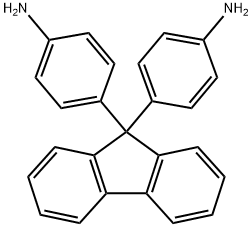

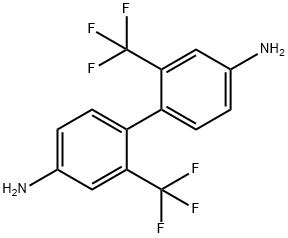
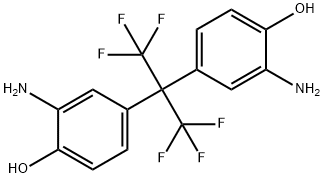
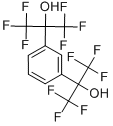
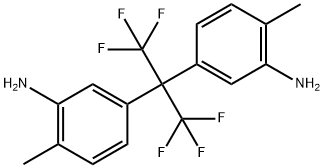
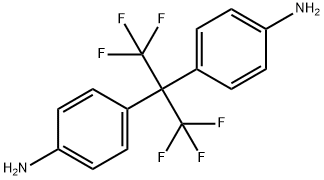

You may like
-
![2,2-Bis[4-(4-aminophenoxy)phenyl]hexafluoropropane CAS 69563-88-8](https://img.chemicalbook.in//Content/image/CP5.jpg) 2,2-Bis[4-(4-aminophenoxy)phenyl]hexafluoropropane CAS 69563-88-8View Details
2,2-Bis[4-(4-aminophenoxy)phenyl]hexafluoropropane CAS 69563-88-8View Details
69563-88-8 -
 4,4′-(Hexafluoroisopropylidene)bis(p-phenyleneoxy)dianiline CAS 69563-88-8View Details
4,4′-(Hexafluoroisopropylidene)bis(p-phenyleneoxy)dianiline CAS 69563-88-8View Details
69563-88-8 -
 55441-95-7 99%View Details
55441-95-7 99%View Details
55441-95-7 -
 N-Vinylformamide 99%View Details
N-Vinylformamide 99%View Details
13162-05-5 -
 Chloro Uracil 1820-81-1 99%View Details
Chloro Uracil 1820-81-1 99%View Details
1820-81-1 -
 2-ethyl-6-methyl-3-hydroxypyridine succinate 99%View Details
2-ethyl-6-methyl-3-hydroxypyridine succinate 99%View Details
127464-43-1 -
 2-ETHYLPYRIDINE 100-71-0 99%View Details
2-ETHYLPYRIDINE 100-71-0 99%View Details
100-71-0 -
 181228-33-1 (S)-Methyl 3-amino-2-((tert-butoxycarbonyl)amino)propanote Hydrochloride (DAP-OMe. HCl) 99%View Details
181228-33-1 (S)-Methyl 3-amino-2-((tert-butoxycarbonyl)amino)propanote Hydrochloride (DAP-OMe. HCl) 99%View Details
181228-33-1